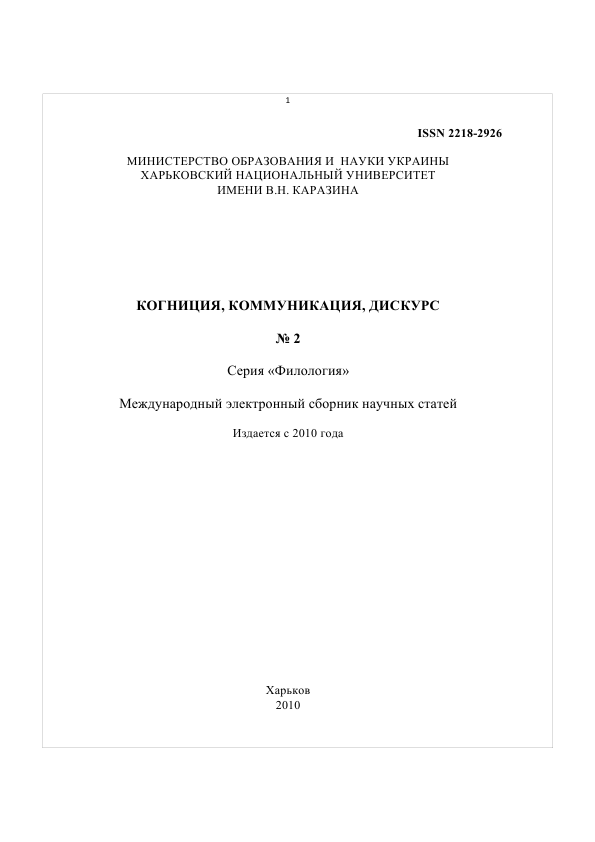Characteristics of Contemporary Use of Church Slavonic Vocabulary in Different Spheres of Comunication
Abstract
This article focuses on one of the dynamic processes of contemporary speech activities that is the re-activation of Church Slavonic vocabulary in different spheres of communication. Certain examples from the mass media and peculiarities of their textual realization are examined. The material for analisis is also drawn from the short dictionary of the Orthodox Church culture, which contains cases of informal use of Church Slavonic expressions and deviations from the norm.
Downloads
References
Журавлев В.К. Русский язык и русский характер / В. К. Журавлев. – М.: Московский патриархат, Отдел религиозного образования и катехизации, Лицей духовной культуры, 2002. – 256 с.
Прядко И.П. Библейская лексика на страницах современных СМИ / И.П. Прядко. Режим доступу: http://www.gramota.ru/biblio/magazines/gramota/kultura/28_24.
Скляревская Г.Н. Давайте говорить правильно! Лексика православной церковной культуры: краткий словарь-справочник / Г.Н. Скляревская – СПб.: Филологический факультет СПбГУ; М.: Издательский цетр «Академия», 2006. – 208 с.
Ушакова А.П. Церковнославянизмы в языке газет / А.П. Ушакова // Художественная культура как феномен: Материалы региональной научно – практической конференции. 11–12 апреля 2002 г., г. Тюмень / Под науч. ред. И. Н. Гнездиловой. – Тюмень, 2002. – С. 137–146.
Authors, who publish with this journal, accept the following conditions:
The authors reserve the copyright of their work and transfer to the journal the right of the first publication of this work under the terms of the Creative Commons Attribution License (CC BY), which allows other persons to freely distribute a published work with mandatory reference to the authors of the original work and the first publication of the work in this journal.
Authors have the right to enter into separate additional agreements for the non-exclusive dissemination of the work in the form in which it was published by this journal (for example, to post the work in the electronic institutions' repository or to publish as part of a monograph), provided that the link to the first publication of the work in this journal is given.
The journal policy allows and encourages the authors to place the manuscripts on the Internet (for example, in the institutions' repositories or on personal websites), both before the presentation of this manuscript to the editorial board and during review procedure, as it contributes to the creation of productive scientific discussion and positively affects the efficiency and dynamics of citing the published work (see The Effect of Open Access).




